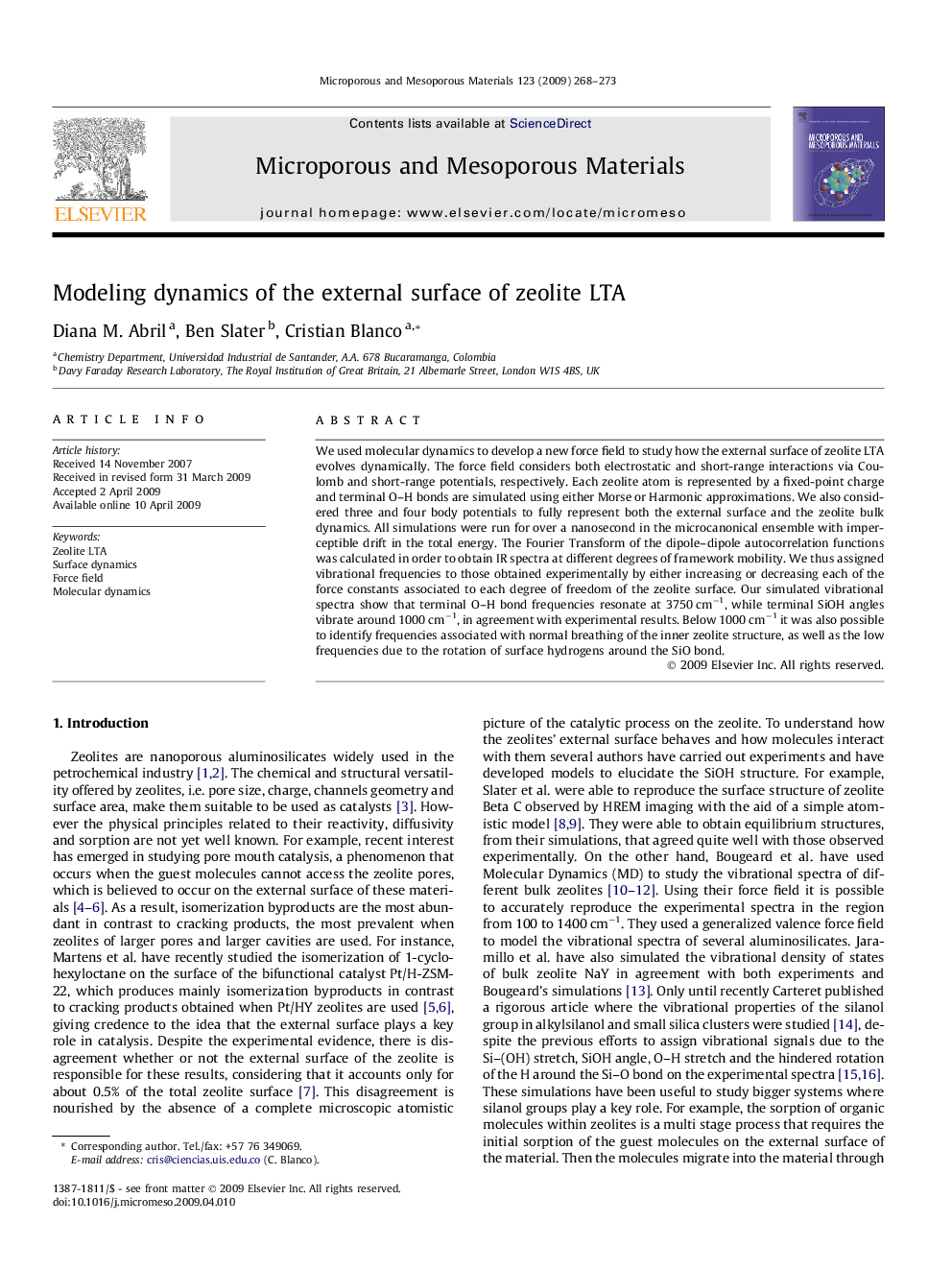| Article ID | Journal | Published Year | Pages | File Type |
|---|---|---|---|---|
| 74890 | Microporous and Mesoporous Materials | 2009 | 6 Pages |
We used molecular dynamics to develop a new force field to study how the external surface of zeolite LTA evolves dynamically. The force field considers both electrostatic and short-range interactions via Coulomb and short-range potentials, respectively. Each zeolite atom is represented by a fixed-point charge and terminal O–H bonds are simulated using either Morse or Harmonic approximations. We also considered three and four body potentials to fully represent both the external surface and the zeolite bulk dynamics. All simulations were run for over a nanosecond in the microcanonical ensemble with imperceptible drift in the total energy. The Fourier Transform of the dipole–dipole autocorrelation functions was calculated in order to obtain IR spectra at different degrees of framework mobility. We thus assigned vibrational frequencies to those obtained experimentally by either increasing or decreasing each of the force constants associated to each degree of freedom of the zeolite surface. Our simulated vibrational spectra show that terminal O–H bond frequencies resonate at 3750 cm−1, while terminal SiOH angles vibrate around 1000 cm−1, in agreement with experimental results. Below 1000 cm−1 it was also possible to identify frequencies associated with normal breathing of the inner zeolite structure, as well as the low frequencies due to the rotation of surface hydrogens around the SiO bond.
